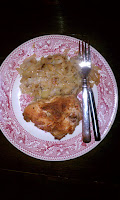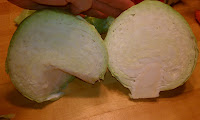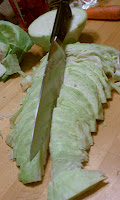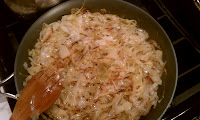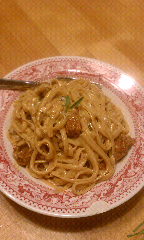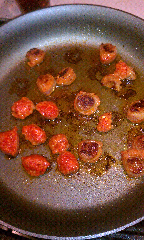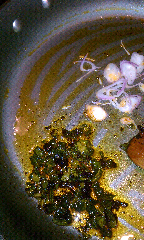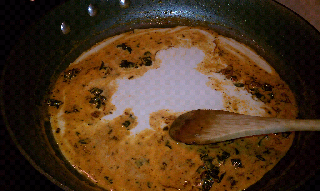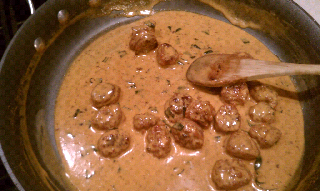I'm lucky enough to have raspberry bushes that produce just as much fruit in the fall as they do in the late spring, and an arsenal of recipes to make sure none of them go to waste. This is one of my favorites.
Raspberry Maple French Toast
French Toast
8 slices of day-old challah, 1/2 inch thick
4-5 eggs
1/4 cup milk
1 Tbs cinnamon
Heat a skillet, griddle or frying pan over medium heat. Lightly beat eggs, milk, and cinnamon in a shallow dish. Add a single layer of bread and then flip the bread to coat the other side. Let it sit in the egg for a minute to soak.
Add a pat of butter or a non-stick spray to the pan and put in a single layer of bread. Cook 3 minutes on one side until lightly browned and flip. Cook 3 more minutes until lightly browned and remove to a warm oven until ready to serve. Repeat with the remainder of your bread.
Syrup
a pint of raspberries
2 cups of maple syrup
4 Tbs/ 1/2 stick of butter
Add the butter to a pan over high heat. Once melted, add raspberries and cook until berries start to break apart. Add syrup and cook until heated through. Poor syrup into a gravy boat or small pitcher (I use a pyrex measuring cup with a spout).
Serve warm over the french toast (or pancakes).
Serves 4-6
*You can use frozen berries with this recipe
*You can also substitute blueberries, blackberries, or even strawberries
*Day-old bread is not necessary, but it makes it that much better
*You can also strain the syrup if you're adverse to pulp or seeds
Raspberry Maple French Toast
French Toast
8 slices of day-old challah, 1/2 inch thick
4-5 eggs
1/4 cup milk
1 Tbs cinnamon
Heat a skillet, griddle or frying pan over medium heat. Lightly beat eggs, milk, and cinnamon in a shallow dish. Add a single layer of bread and then flip the bread to coat the other side. Let it sit in the egg for a minute to soak.
Add a pat of butter or a non-stick spray to the pan and put in a single layer of bread. Cook 3 minutes on one side until lightly browned and flip. Cook 3 more minutes until lightly browned and remove to a warm oven until ready to serve. Repeat with the remainder of your bread.
Syrup
a pint of raspberries
2 cups of maple syrup
4 Tbs/ 1/2 stick of butter
Add the butter to a pan over high heat. Once melted, add raspberries and cook until berries start to break apart. Add syrup and cook until heated through. Poor syrup into a gravy boat or small pitcher (I use a pyrex measuring cup with a spout).
Serve warm over the french toast (or pancakes).
Serves 4-6
*You can use frozen berries with this recipe
*You can also substitute blueberries, blackberries, or even strawberries
*Day-old bread is not necessary, but it makes it that much better
*You can also strain the syrup if you're adverse to pulp or seeds

